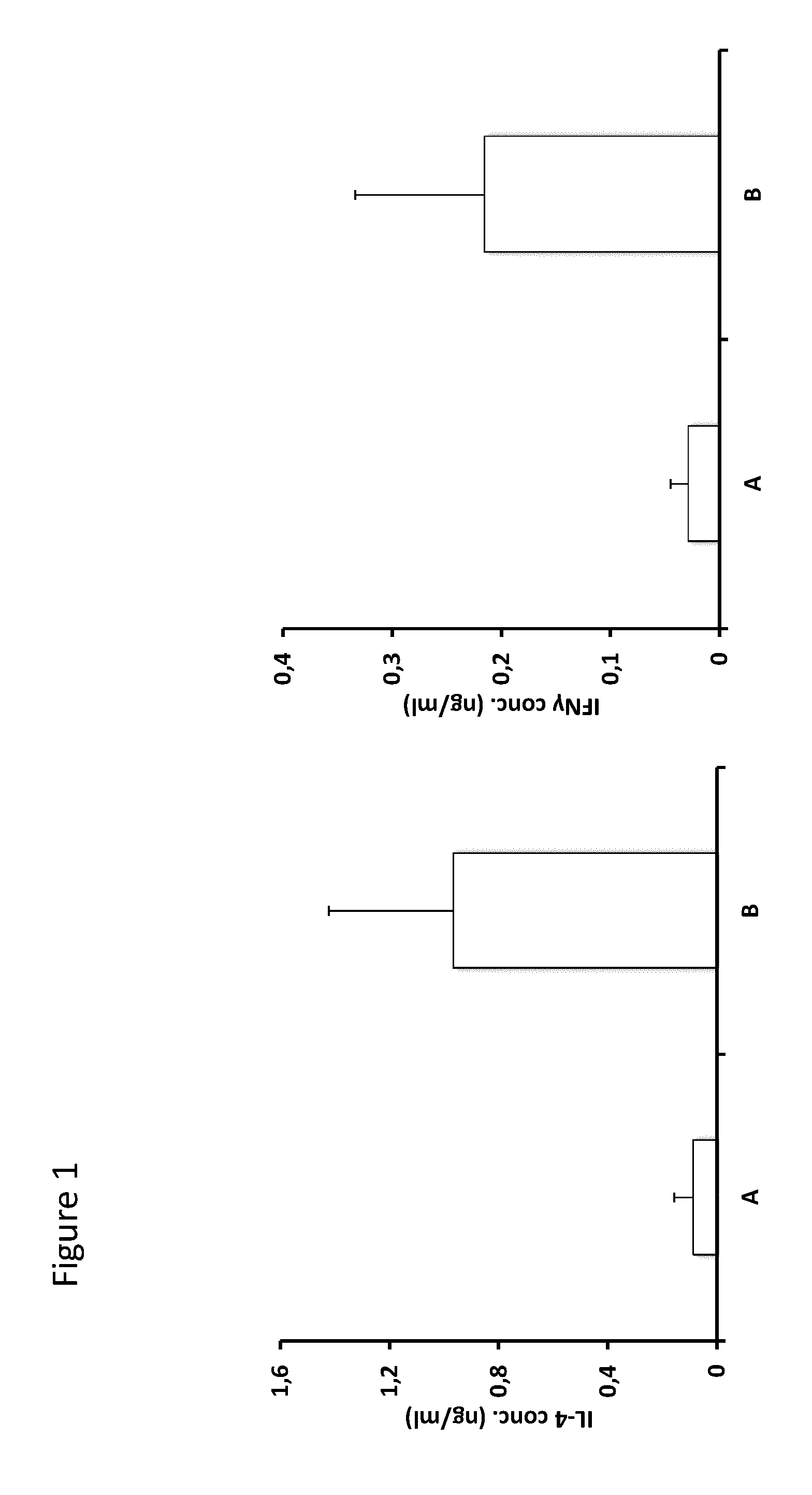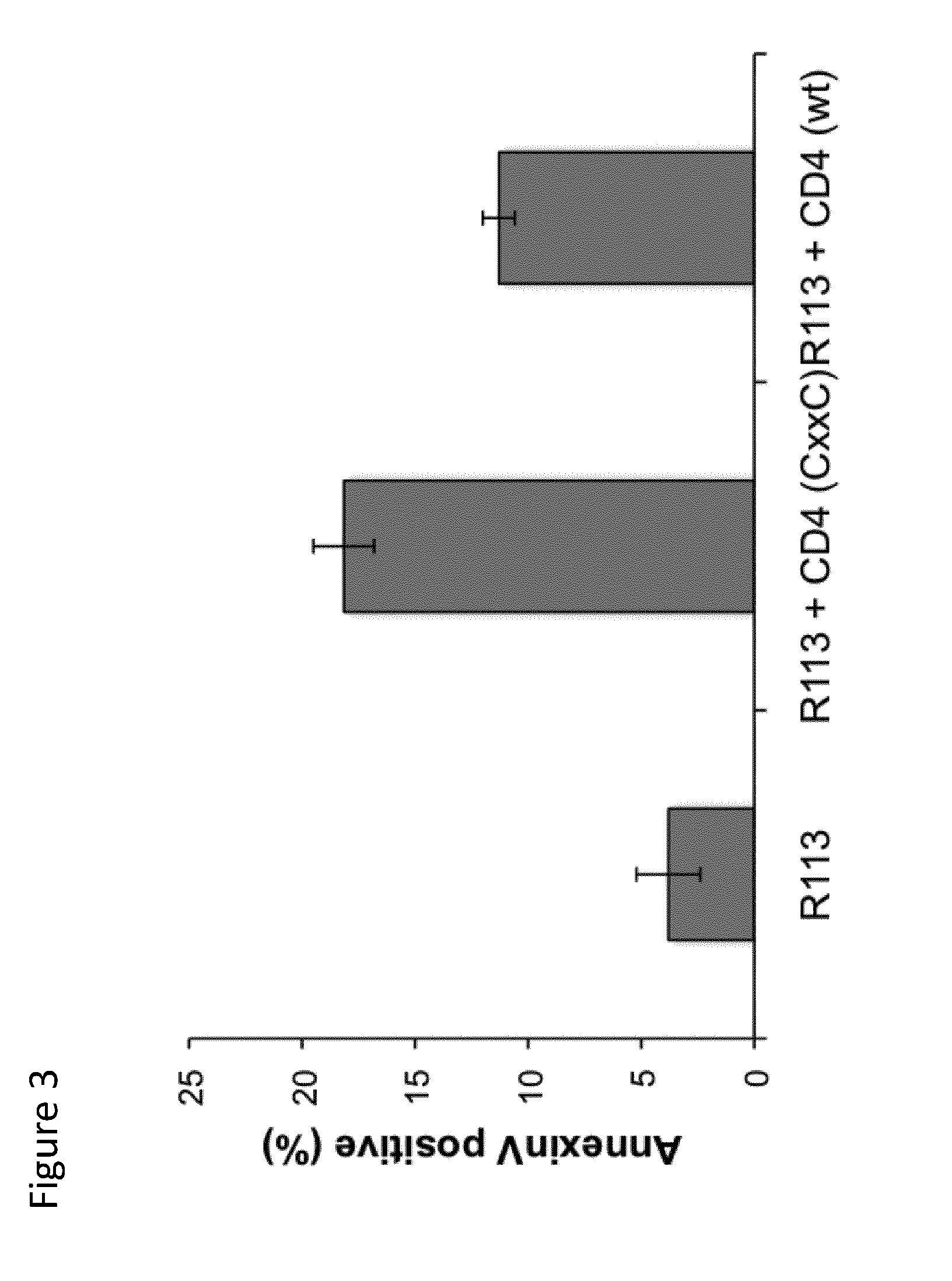Immunogenic peptides for use in the prevention and/or treatment of infectious diseases, autoimmune diseases, immune responses to allofactors, allergic diseases, tumors, graft rejection and immune responses against viral vectors used for gene therapy or gene vaccination
a technology of immune response and peptide, which is applied in the field of immunogenic peptides, can solve the problems of limited approach, reduced immune system's ability to elicit a cytolytic immune response, and many diseases in mammals, and achieve the effect of increasing the immune response to specific antigens and preventing and treating infections
- Summary
- Abstract
- Description
- Claims
- Application Information
AI Technical Summary
Benefits of technology
Problems solved by technology
Method used
Image
Examples
example 1
[0174]Control of activation of class II restricted CD4+ T cells specific to factor VIII by immunization with a peptide containing a CD1d-restricted T cell epitope and a thioreductase motif in flanking residues
[0175]BALB / c Factor VIII KO mice (group A) were immunized 4 times at 1 week interval with 50 μg of peptide 2196, which contains a CD1d-restricted NKT cell epitope and a C-XX-C thioreductase motif within flanking residues (SEQ ID1).
SEQ ID1: CGH CGG FTN MFA TWS PSK
[0176]Human factor VIII was then injected by the subcutaneous route using 10 IU per injection on 5 occasions separated by one week. Ten days after the last immunization the mice were sacrificed and spleen CD4+ T cells were prepared by magnetic cell sorting. Such cells were stimulated twice with the immunizing peptide and FVIII in vitro before assessing their activation state as measured by the production of IL-4 and IFN-gamma. A control group (B) was treated according to the same protocol but did not receive peptide vac...
example 2
[0179]Suppression of anti-Ad5 IgG antibody response by immunization with a peptide containing a CD1d-restricted NKT cell epitope and a thioreductase motif
[0180]C57BL / 6 mice (n=6) were immunized by four subcutaneous injections of 50 μg of peptide of SEQ ID2 in alum carried out at one-week interval.
SEQ ID2: CHG CGG FIGLMYY
[0181]Such peptide contains a CD1d-restricted NKT cell epitope of hexon protein of adenovirus 5 (Ad5) and a thioreductase motif in flanking residues. A control group (n=6) of mice received physiological serum in alum instead of peptide. All mice then received 2 injections of 109 Ad5 viral particles by the IV route, separated by 1 week. Ten days after the last Ad5 injection, mice were bled and the concentration of total IgG antibodies to Ad5 particles was measured in a direct binding ELISA. Briefly, Ad5 viral particles were insolubilized on polystyrene plates, followed by washing and incubation with a dilution of mouse serum. After a second washing, the binding of mou...
example 3
[0182]Induction of apoptosis of tumor cells by CD4+ NKT cells elicited by mouse immunization with a peptide encompassing a CD1d restricted NKT epitope containing a thioreductase motif
[0183]C57BL / 6 mice (n=6) were immunized by four subcutaneous injections of 50 μg of peptide of SEQ ID3 in alum carried out at one-week interval.
SEQ ID3: CGH CGG FDKLPGF
[0184]Such peptide contains a CD1d-restricted NKT cell epitope derived from ovalbumin and a thioreductase motif in flanking residues. A control group (n=6) of mice received physiological serum in alum instead of peptide. Ten days after the last immunization the mice were sacrificed and spleen CD4+ T cells were prepared by magnetic cell sorting.
[0185]Such cells were stimulated twice with the immunizing peptide in vitro before assessing their activation state as measured by the production of IL-4 and IFN-gamma.
[0186]CD4+ NKT cell lines were then assayed in vitro for their capacity to kill EG7 tumor cells. EG7 tumor cells (H-2b) are derived ...
PUM
 Login to View More
Login to View More Abstract
Description
Claims
Application Information
 Login to View More
Login to View More - R&D Engineer
- R&D Manager
- IP Professional
- Industry Leading Data Capabilities
- Powerful AI technology
- Patent DNA Extraction
Browse by: Latest US Patents, China's latest patents, Technical Efficacy Thesaurus, Application Domain, Technology Topic, Popular Technical Reports.
© 2024 PatSnap. All rights reserved.Legal|Privacy policy|Modern Slavery Act Transparency Statement|Sitemap|About US| Contact US: help@patsnap.com










